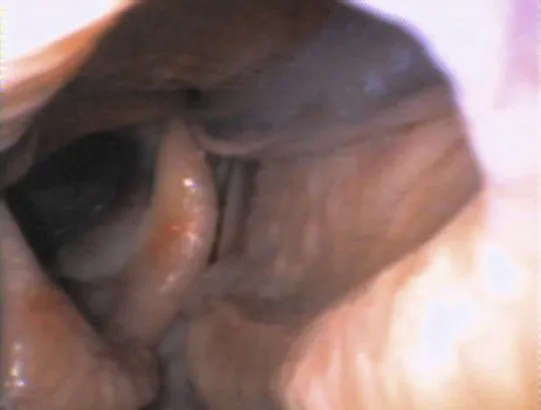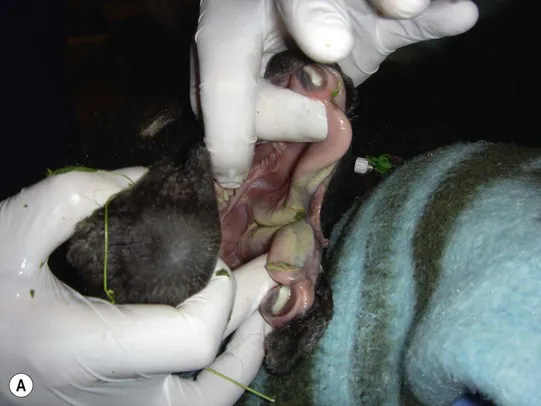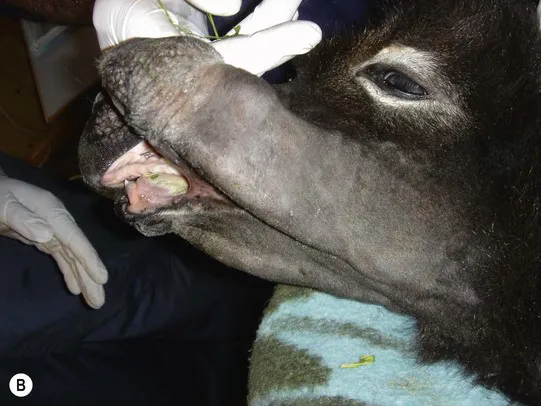
eBook - ePub
Knottenbelt and Pascoe's Color Atlas of Diseases and Disorders of the Horse
Siobhan Brid McAuliffe
This is a test
Partager le livre
- 416 pages
- English
- ePUB (adapté aux mobiles)
- Disponible sur iOS et Android
eBook - ePub
Knottenbelt and Pascoe's Color Atlas of Diseases and Disorders of the Horse
Siobhan Brid McAuliffe
Détails du livre
Aperçu du livre
Table des matières
Citations
À propos de ce livre
A unique collection of photographic illustrations of the major equine disorders, providing both qualified practitioners and veterinary students with an invaluable guide to greater diagnostic accuracy, treatment options, and a wider understanding of the processes and signs of equine disorders. The systematic presentation of disorders along with the icon-based key points system of evaluation gives unparalleled ease of access and use. Conditions presented are gathered from around the world, making for a resource of universal application that is a major aid to the rapid visual recognition and interpretation of clinical signs that are vital elements of success in veterinary practice.
- Many new conditions added
- Over 300 new colour illustrations
- Brand new design with icon-based key points boxes.
- Systematic presentation of text with emphasis gives greater ease of access.
- Treatment options and prognoses now included.
- Includes access to online database of all disorders
- Two upcoming top experts brought in to build on the foundation of Derek Knottenbelt and Reg Pascoe's milestone text.
Foire aux questions
Comment puis-je résilier mon abonnement ?
Il vous suffit de vous rendre dans la section compte dans paramètres et de cliquer sur « Résilier l’abonnement ». C’est aussi simple que cela ! Une fois que vous aurez résilié votre abonnement, il restera actif pour le reste de la période pour laquelle vous avez payé. Découvrez-en plus ici.
Puis-je / comment puis-je télécharger des livres ?
Pour le moment, tous nos livres en format ePub adaptés aux mobiles peuvent être téléchargés via l’application. La plupart de nos PDF sont également disponibles en téléchargement et les autres seront téléchargeables très prochainement. Découvrez-en plus ici.
Quelle est la différence entre les formules tarifaires ?
Les deux abonnements vous donnent un accès complet à la bibliothèque et à toutes les fonctionnalités de Perlego. Les seules différences sont les tarifs ainsi que la période d’abonnement : avec l’abonnement annuel, vous économiserez environ 30 % par rapport à 12 mois d’abonnement mensuel.
Qu’est-ce que Perlego ?
Nous sommes un service d’abonnement à des ouvrages universitaires en ligne, où vous pouvez accéder à toute une bibliothèque pour un prix inférieur à celui d’un seul livre par mois. Avec plus d’un million de livres sur plus de 1 000 sujets, nous avons ce qu’il vous faut ! Découvrez-en plus ici.
Prenez-vous en charge la synthèse vocale ?
Recherchez le symbole Écouter sur votre prochain livre pour voir si vous pouvez l’écouter. L’outil Écouter lit le texte à haute voix pour vous, en surlignant le passage qui est en cours de lecture. Vous pouvez le mettre sur pause, l’accélérer ou le ralentir. Découvrez-en plus ici.
Est-ce que Knottenbelt and Pascoe's Color Atlas of Diseases and Disorders of the Horse est un PDF/ePUB en ligne ?
Oui, vous pouvez accéder à Knottenbelt and Pascoe's Color Atlas of Diseases and Disorders of the Horse par Siobhan Brid McAuliffe en format PDF et/ou ePUB ainsi qu’à d’autres livres populaires dans Médecine et Sciences vétérinaires équines. Nous disposons de plus d’un million d’ouvrages à découvrir dans notre catalogue.
Informations
Chapter 1
Gastrointestinal system
Part 1: The mouth
Developmental disorders
Cleft palate (Figs. 1.1–1.3)
Cleft palate is an uncommon abnormality. When seen it most frequently involves the caudal aspect of the soft palate; however the hard palate, lips and external nares may also be affected. The degree to which it is heritable is not well defined. Foals with large clefts may show dramatic nasal regurgitation of milk during nursing. In some cases, particularly those with relatively small clefts or clefts in the soft palate, nasal return of milk becomes obvious only after feeding and may be relatively minor in amount. Small clefts may not always be easily visible or produce significant nasal return of food and, occasionally, some are only detected after some years, when nasal reflux of grass and more solid food material may be present. Consequent rhinitis and nasal discharges may not be immediately identifiable as resulting from a cleft palate. Occasionally the cleft is sufficiently small to produce no detectable evidence and these are sometimes identified incidentally during clinical or post-mortem examinations. Large palatal defects in young foals have profound effects including failure to ingest adequate amounts of colostrum, starvation and inhalation pneumonia.

Differential diagnosis: Nasal/oral discharge of milk and/or dysphagia may also be seen with:
• Neurologic dysphagia (associated with hypoxic ischemic encephalopathy in foals)
• Esophageal obstruction
• Laryngeal/pharyngeal abnormalities
• Severe weakness/depression.


Diagnosis
• In some cases, diagnosis can be made with a careful oral examination.
• Endoscopy should be performed via both nares. Oral endoscopy may also be required.
• Thoracic radiographs are useful to identify and characterize secondary pneumonia.
Treatment
• Treatment needs to be directed at two main areas, correction of the abnormality and treatment of secondary problems such as pneumonia.
• Treatment of the defect involves one of a variety of surgical techniques. Dehiscence of the surgical site is a common problem. In severely compromised foals, surgery may need to be delayed while secondary problems (pneumonia, sepsis) are addressed. In these situations, feeding via a nasogastric tube or parenteral nutrition is required.
• The prognosis is better in foals with defects only involving the soft palate.
Cleft tongue and mandible (Fig. 1.4A,B)
This condition has been seen in a number of donkey foals. The condition is thought to be heritable. The condition is visually obvious with no differentials. None of the cases to date have been treated as the defects are usually extensive and frequently these foals present with severe secondary complications related to the inability to nurse.


Parrot mouth (brachygnathia) (Figs. 1.5–1.7)
Parrot mouth is a common congenital abnormality characterized by disparity of the lengths of the mandible and maxilla. The mandible is shorter than the maxilla and there is no occlusal contact between the upper and lower incisors. Males are more commonly affected. In the milder cases, the full extent of the discrepancy may not be obvious at birth, becoming more apparent as the permanent incisors erupt and grow into their normal occlusal positions. The failure of significant occlusion results in an increasing overgrowth of the upper incisors and impingement of the mandibular teeth into the soft tissues of the hard palate. Individuals with lesser degrees of inferior brachygnathia may be less affected but the lingual edges of the lower incisors may become sharp and lacerate the gums and hard palate. More commonly the lower incisors tend to prolong the line of the lower jaw and the labial margins of the upper incisors become long and sharp and may lacerate the lower lip. Simultaneously there is usually a discrepan...